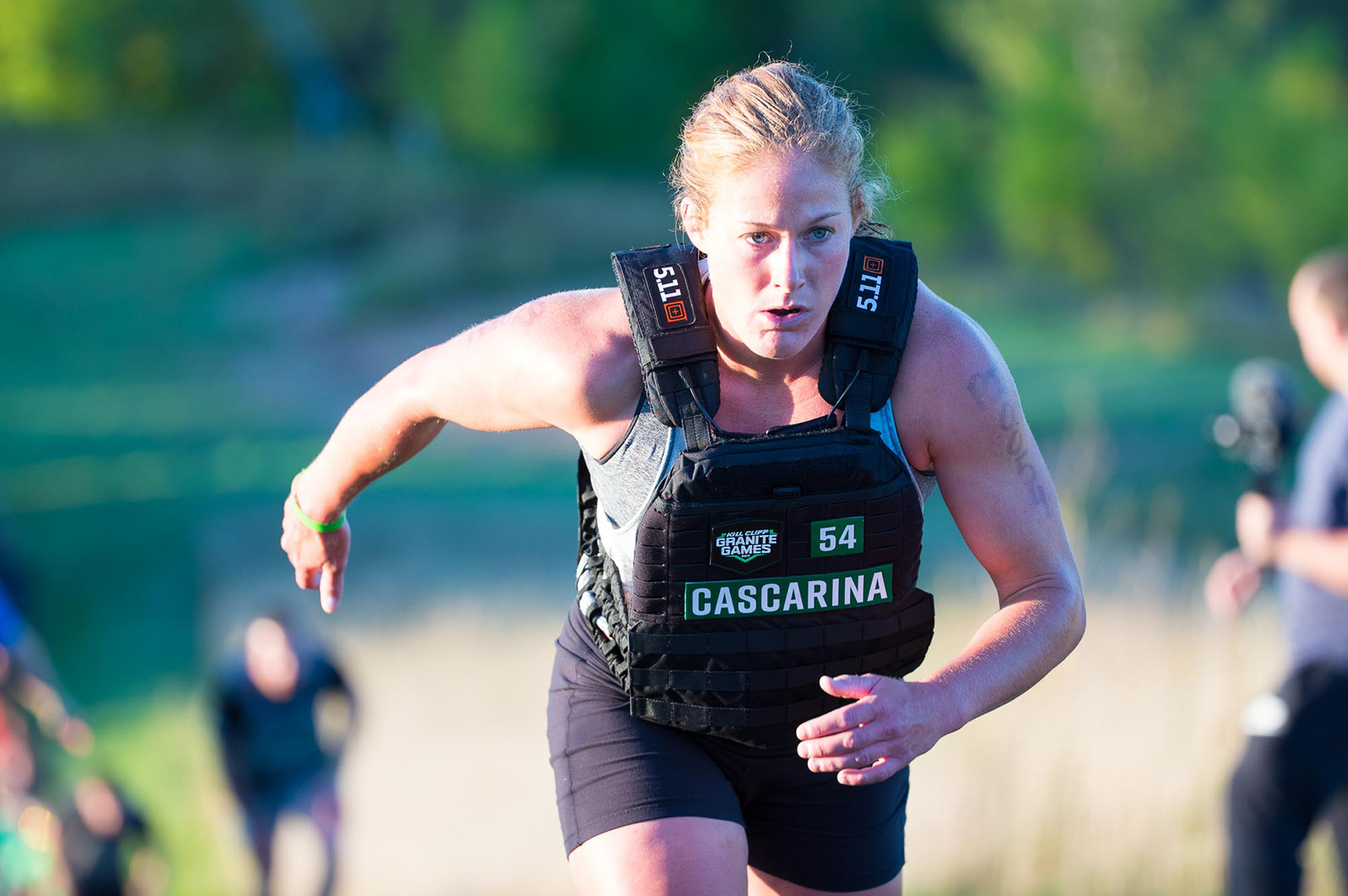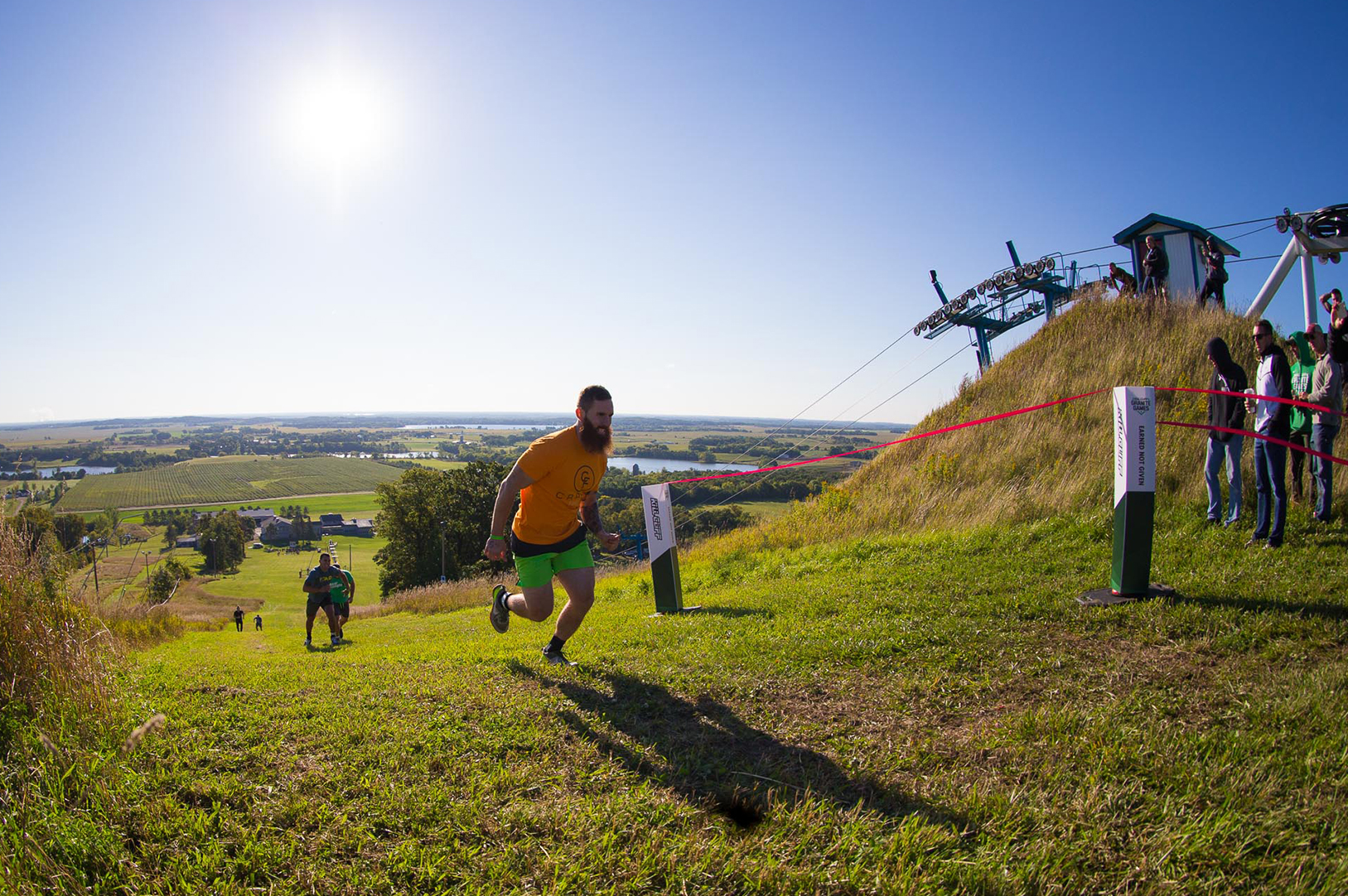The 2017 Granite Games delivered some unprecedented—and if we say so ourselves, rather epic—events. Leading up to last year’s installment, Athletes knew they’d be donning a swim cap—but for the Pro Individuals, there was something more in store. The opening events on Friday morning were top secret to all but a very select few on a need-to-know basis. We sat down with John Swanson to draw back the curtain on it all—to learn just how this event came to be, how they pulled it off and why it mattered.
What inspired you to build out the 5.11 Trail Run? When you look at that level of competition and the level at which they [Pro Individuals] are able to perform—we knew the Swim Run would be a fun test for the entire Athlete population—but for those Athletes who’re Regional-based or Games level, it didn’t create enough adversity for them. So this year, we wanted to create adversity for all.
That’s where the Swim Run came in for the other divisions. But for the Pro Individual division, we wanted to do something that threw them for a loop. Something they couldn’t control. One of the things we’ve done in years past is give out the workouts in advance. Athletes have always had a chance to try the workouts out. They’ve always had a chance to see and prepare. So we thought, “We’re going to throw them everything—but yet we’re not. We’re going to do something that we know they can complete. They can take the task on and excel at it, but we’re not going to tell them ahead of time what they’re doing.”
We’d planned the Swim back in May, and once those details got ironed out and all the programming finalized, we saw room for an opportunity to do something fun. That’s where we started going on family walks, the brain starts ticking a little bit. A friend I’d been working closely with was putting something else on out there [at Powder Ridge] and I just said, “I want to come out and see how you guys set it up,” and he gave me a tour of the venue. When I got to the top [of the ski hill] I just looked out, and the first thing I thought was, “How neat would it be to finish Friday morning with all the Athletes and a big group photo of everybody and a really cool view?” You can see for miles all around St Cloud and almost to the Twin Cities—that was the thing that got me, the top of that hill looking down.
So we’re at the top of this vista, and I said, “Ok. What an amazing hill that was. That will be event two. But we’re not going to bring the Athletes out here just to run 2 minutes up a hill.” So then we started to look at the trail and the course and what we could build out of it. I knew we could get two good workouts out of the venue that really tested two radically different things, and that’s how we came out with the trail run and the hill sprint.
So when the Athletes completed the trail run, did they exceed your expectations? I don’t think I’m ever not amazed at the times, the weights, the speed at which they can move. We’d tested the workouts, we’d done both event 1 & 2. I had the best male finishing right around 19:15; on the day of, the best time that came in was 18:06. To finish that course in a minute+ faster—in a 5.11 vest—to hold an 8-min mile on some pretty aggressive hills is spectacular.
It sounds like an awful workout. What kind of logistics did you have to orchestrate for this? It was completely different from anything you’ve ever done before at the Granite Games. We created a mini-division without a lot of people knowing. This was an event that I wanted to keep secret. I think in the lead-up—so prior to Wednesday, two days before—there were only three people who knew about it. We basically created a whole sub-set team, and they had fun with it. They were responsible for one event for the weekend, and nobody knew what they were doing. They had their own trailer, their own supplies, and they were just randomly always gone. We had private meetings for it—from our volunteer director to scoring, nobody knew about this workout.
The secrecy was really exciting because the one thing I wanted was to keep it under wraps. I did not want the Athletes to know where they were going. As late as Thursday night, they thought they were showing up Friday morning for a workout onsite. They didn’t learn until Friday at 5 AM when the two buses pulled up that they were leaving. So, from a logistics standpoint, we pulled it off by building a separate team and then late Wednesday night, we pulled in another five people and said, “Hey, you’re getting pulled in to this. You arrive at 4:30 AM, we’re going to take you out to a location.” Even then, the volunteers didn’t know where they were going. There were only three staff members who knew where we were heading, so they loaded up the rest of the team who’d be helping that day and actually helped on Thursday with build-out.
And the Athletes? The way the Athletes were informed was, they were told two weeks out to make sure they were at Athlete orientation. We positioned a brief to take place immediately after, at which point we brought them down to the floor and I briefed them on Cycle right where it was going to happen. And all I said was, “This weekend is going to be about adversity; you’re going to learn a lot about yourself as an Athlete. Competing is not just about who’s the fittest, the strongest, the fastest. It’s about who can adapt to adversity.” That’s one of the things you don’t get a lot in training—you don’t get to learn that part of yourself until you’re in adverse circumstances. All we said was, “This is going to be an adverse weekend, you’re going to learn to adapt. Pack everything you need for tomorrow.” And I think I threw in, “Grab a towel.” So these Athletes had no clue where they were off to, we simply told them to show up at 5 AM. They were warned, “If you’re here at 5:30, you’re too late and your weekend’s over.” And nobody missed [the bus].
What was it like on the bus? The mood heading down? We had two directors stay back with the Athletes aboard the buses. I myself and the team assigned to run the event were onsite at 5 AM, and some as early as 4:30. There was absolutely no one onsite who did not play a role. There were no extra people there watching, it was completely closed, no coaches, no directors, no volunteers. We had two head judges, we had our event director, scoring director, media director and a handful of media—and nobody else.The buses were quiet, very quiet, I’m told. And I don’t know if that’s because they were nervous, it was probably more so because it was early.
The two directors who took care of the Athletes actually collected their phones on the spot. One of the things we wanted to do was continue to make them uncomfortable. Athletes are so comfortable with their phones in their hands. They can get on Facebook and Instagram, and they’re able to sort of soothe themselves. We wanted them to be uncomfortable. The other thing is we obviously didn’t want them to tell anybody where we were going. Even then, lo and behold we had coaches follow the buses out there. They were told to turn around and go home.
GG: We’ve talked a lot about the Trail Run. Tell us about the Sprint. When the Athletes finished their trail run, we left them all right at the finish line, which we’d designed to be the starting line of event 2. So when they concluded the trail run, I gathered them up and told them how crazy fast it was. And then, instead of announcing event 2, we simply had them turn around and look at it, at this mowed trail. The ski hill had obviously overgrown throughout the off-season, but we had our running trail mowed straight up. All you could see was that perfectly straight line. And that’s how we announced it.
And when they took off, I’d never seen Athletes lock up like that. It was short and sweet and to the point, and it tested exactly what we wanted it to test. It was such a cool sight to see 5 people lined up at the base of Powder Ridge, and just go, woosh, right up the hill. And the first group had a large learning curve, because the sprinted the first 125-150, and then they had another 75 left where it got really steep. They were crawling and walking, and you saw the rest of the Athletes go, “Awwwwww….” And so the rest of the Athletes were at an advantage because they got to watch the first group go and get that instant feedback on pacing. Something that we did was, your finish on event 1 played into event 2 heats in reverse order. So the Athlete who won event 1 went last on event 2. It was valuable to finish high on the trail run to put yourself in the later heats on event 2. Not only for recovery, but being able to watch someone else do it is a huge advantage.
It seemed as though a lot of Athletes absorbed the speech you gave about embracing adversity, like it really struck a chord with them. A lot of them appeared to thrive on it. What I told them when I sat them down was, “Look, in a year or two, I hope you never do our individual division. One of the things we’re trying not to be is the CrossFit Games.” My hope is these Athletes can look back and say this weekend was pivotal for them to gain confidence and learn about themselves as Athletes. And maybe they look back at the success they have in the future and just look back at this weekend as one of those bright spots that helped them along their journey.
And I think it’s important for us to know where we fit in the ecosystem. One of the things I take pride in is creating events that will test them and give them some adversity so that when they do get to compete on the big stage, they feel, maybe not completely comfortable, but they can tell themselves, “Ok, this isn’t my first time competing in front of the lights.” That they’ve been faced with some different things. It was meant to be an adverse but fun weekend.





